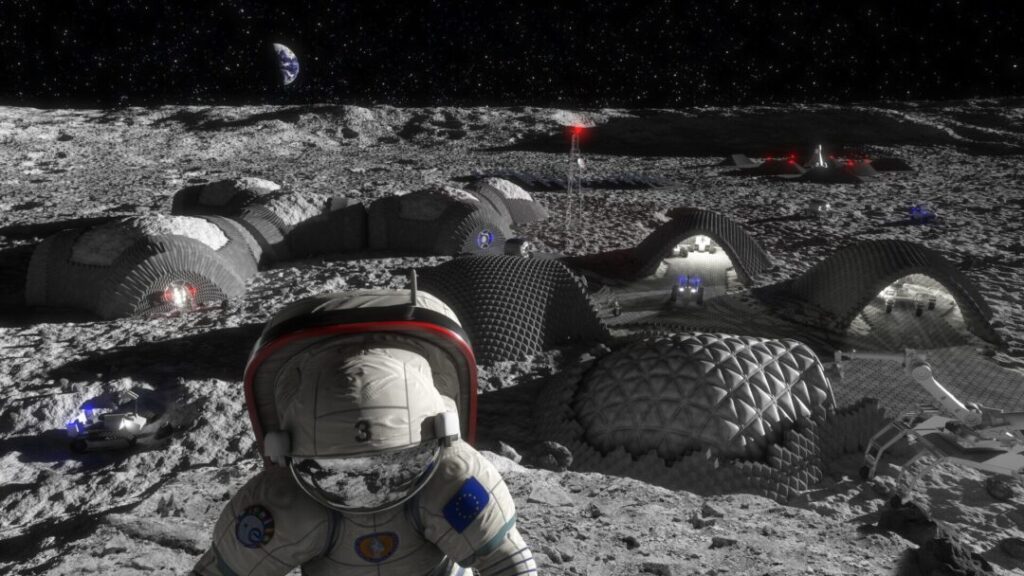The Moon, where the US, Europe, Russia, and China plan to establish a colony, may cause a new and grand war between the major powers in the 2020s. The reason that may shift the focus of global wars currently ongoing in cyberwar to orbit is the helium-3 isotope, which can potentially end the economic crisis on our planet.
The nonradioactive isotope of helium, made up of one neutron and two protons, is scarce on Earth and is primarily used for nuclear fusion research, MRI (magnetic resonance imaging), and plutonium scanners. Whereas the Earth’s magnetic field keeps away the ample amount of Helium-3 dispersed from the Sun in a cosmic storm, plenty of it covers the surface of the Moon.
China, where more than 1.5 million people lose their lives due to pollution annually, wants to supply its energy from helium-3 from 2020 onwards. Professor Ouyang Ziyuan, head of the China Moon Exploration Programme, believes that the helium-3 found on the Moon could be enough for our planet for 10,000 years.
The amount of energy helium-3 can provide is mind-blowing. 40 tonnes of the radioactive isotope used in environmentally friendly nuclear fusion reactors can light up the entire US for one year. Nevertheless, it is quite challenging to obtain such valuable material.
Who will win on the Moon?
The Orion space capsule, SLS rocket, and smart 3D printers are just the first steps toward colonizing the Moon. Humanity needs to open mines the size of cities to supply reactors worldwide with helium-3, humankind. The regolith eventually absorbs the large amount of helium-3 scattered across the Moon.
Fabrizio Bozzato from Taiwan’s Tamkan University believes there’s a way to process helium-3 on the Moon and bring it to Earth. This method involves heating the regolith (sand that covers the surface of the Moon) to 600 degrees and shipping the large amounts of gas it produces. According to his estimates, one ton of the gas output from the heating may be valued at up to 1.78 billion dollars. Preparing or packaging the gas on the Moon would be much more economical.
Bozzato also believes in the necessity of using helium-3 from 2020, just like the Chinese. In his paper on World Security Network, Bozzato says that humanity can not escape poverty by 2050 without an alternative energy source to sustain 9,6 billion people. China is one of the top countries that need such an alternative energy source, with a population of 1.4 billion people. China became the first country to successfully land a man-made spacecraft 38 years after the Apollo missions with the Chang’e mission and has been observing the celestial body up close since 2010. In the 2020s, China plans to establish a moon base to become a pioneer in alternative energy for humanity. If there were no challengers, China might become a monopoly, says Bozzato.

Image: ESA
The helium-3 market would overwhelm the Earth
NASA estimates the upcoming 20 years of Moon and asteroid missions will cost at least 20 billion dollars. Most of the spending will be based on developing new-generation rockets and engines.
Energy becoming the top prize in the space race may cause a much more challenging rivalry to control out of the atmosphere. Asteroid mining companies such as Google-led Planetary Resources aim for platinum, China wants helium-3, and companies such as Shackleton Energy want Moon water. Google is investing millions of dollars in the LunarX Prize challenge to determine which companies are exploring the Moon for themselves.
Besides, we shall not ignore the Moon base plan of ESA. Eventually, the US building a robotic base on the solar pole of the Moon and China establishing a colony on the far side of the Moon will be the beginning of a critical era for humanity.
The UN Foreign Space Treaty, which China also signed, defends using Moon sources for humanity. Considering how the sources on Earth are used and for whom, I believe we shouldn’t be too optimistic about the Moon. Eventually, the rules will be set by trade, not humanity.
Main image: ESA
This article is from 2015. To look at the original TR article, click the link below:

